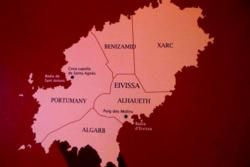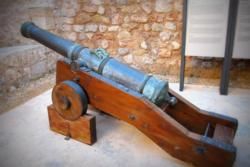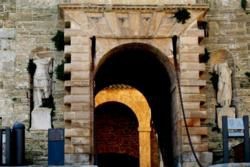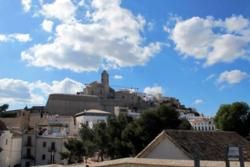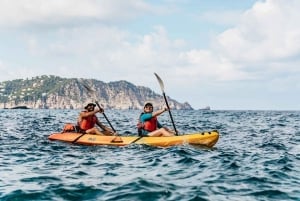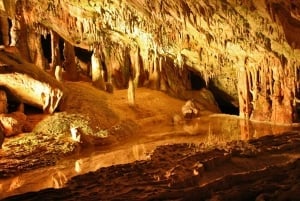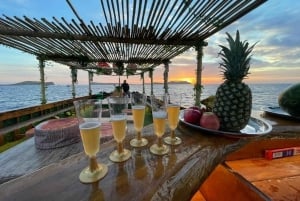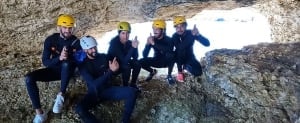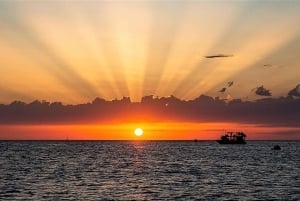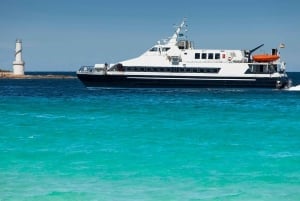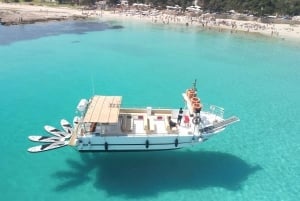History & Culture
Ibiza Through The Ages - A Small Island Playing A Big Part
Most of us think we know everything there is to know about Ibiza’s past – not much to it really, just a whole lot of hedonistic partying – but it might surprise you to know that Ibiza has a history that dates back about 3000 years and during that time, she has played a pivotal part in shaping the world as we know it today.
For an island with a land mass of a mere 25km by 40km, Ibiza has an intriguing and complicated history. Almost every Empire has lost and spilled blood in the crystal clear turquoise waters of the Med in their efforts to conquer the civilized world.
The first people to land upon the shores of Ibiza way back in 645BC were the Phoenicians – a sophisticated, cosmopolitan and peaceful civilization who were more about engineering and trading than rape and pillage - which was the order of the day in the Dark Ages.
The Phoenicians who were, it seems, way smarter than most, had found their way out of the Med through the straits of Gibraltar about 1000 years before everybody else. They discovered Ibiza while trying to set up the tin trade route between Phoenicia (modern day Lebanon) and the UK’s Cornish tin mines which they had helped to develop. Until the 17th century, all boats sailing the Med were galleys which meant that most of the space aboard was occupied by large muscular men rowing for kingdom come. The little storage space that was available onboard was used to store the goods intended for trade instead of food. Using this space to store food would have greatly reduced the profitability of each journey..... so the discovery of Ibiza was a Godsend (especially for the previously mentioned burly rowers). The Phoenicians set up a service station on Ibiza and bestowed their greatest honour on the little hospitable island, naming it after Bes, their god of safety, protection and dance. Finally, Ibiza had a name and that name was "Ibossim".
The Phoenicians didn’t so much as lose control of Ibiza as lose control of Phoenicia itself, when in 539BC, the Persian army lead by Cyrus the Great was victorious in conquering the country and divided it into four vassal kingdoms. Most Phoenicians made their way to the city of Carthage (which used to be a dependency of Phoenicia before gaining independence in 650BC), in the newly appointed kingdom of Tyre and simply reinvented themselves as the Carthaginians. Over the next 400 years, Carthage built Ibiza up to the 3rd most powerful city in the empire – not really a difficult task for the people who created the modern day alphabet. By far the most interesting era of the Carthage period, however, was the Punic Wars. Led by Hannibal (Un hombre loco, who’s birthplace is rumoured to be Conejera island just off the South west coast of Ibiza).
The Ibicencan slingers, however, that were used by Carthage in the war were rumoured to be so accurate that Rome made sure to recruit them to their forces when they finally lost patience with Carthage and invaded in 123BC. Rome dismantled Carthage and took control of Ibiza, renaming her Ebusus. They used Ibiza for their wood supply and the recruitment of soldiers in the form of the aforementioned slingers. In return they taught the locals how to farm grapes, olives and corn. Two major historic landmarks still stand in all their splendour today – the epic entrance gates to Dalt Vila as well as the arched bridge that spans across the now re-flowing river in Santa Eulalia.
After the fall of Rome, Ibiza’s history has large gaps where very little is known. During the Dark Ages – roughly between the 5th and 9th centuries – very few records were kept of the region’s history. We do know that the island was conquered at some point by the Vandals, the Barbarians and the Byzantine alike. The only one of the three to leave behind anything worth mentioning however, were the Byzantine who helped to improve the irrigation systems and introduced shared crop farming to help strengthen Ibiza’s agricultural standing in the region.
Early in the 9th century, the Arabs took control of Ibiza and managed to keep a firm hold on her for over 500 years. They too decided that another name change was in order and for over half a century Ibiza was known to the rest of the civilised world as Yebisah. The Arabs managed to protect Ibiza from invading nations partly because they took the opportunity to upgrade and reinforce the walls around Dalt Vila. A Mosque was also built in the old town – where the cathedral stands today – and the ruling Arabs settled in for the long haul. During their extensive reign, they had a powerful effect on the local culture, much of which can still be seen today in the architecture, traditional dress and even the Ibicenco language. But all good things must come to an end and for the ruling Arabs, that day was the 8th of August 1235 when the Catalan forces from mainland Spain stormed the Citidal through a secret passage- way, the entrance of which can still be seen today in the Calle de San Ciriaco in Dalt Vila... Even if you can’t actually access the castle through them anymore. Surprise, surprise, the island was renamed but again and all of the towns were given names that honoured Christian Saints. The Mosque was destroyed and Churches were built all over the island.
These new churches turned out to be quite handy in the years to come as mainland Spain rather neglected its new acquisition leaving it wide open for the marauding pirates to plunder and pillage. The Churches were used as defence refuges which helped protect the local villagers by offering them shelter during these violent and numerous assaults. The Pirate Towers were eventually built by the locals as an early warning system against further attacks. Large fires were lit at the top of the tower as soon as a Pirate ship was spotted and smoke signals were sent from tower to tower letting everyone know it was time to pack up your live stock and retreat to safety, those dreaded pirates were back.
Ibiza retains her reputation for being invaded even today, as 3 million people choose to descend on this little Island every summer to enjoy her splendour and relish in her unique and powerful energy. If the past is anything to go by she is sure to continue doing this for centuries to come.


